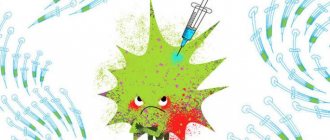The concept of “vaccination” implies a medical process that is intended to immunize the body against certain groups of diseases. The basis of the grafting material is active (weakened) and inactivated (dead) infectious pathogens.
According to general concepts, all groups of the population are subject to vaccination - from infants to the elderly. There are a number of separate types of vaccinations that are included in the National Calendar and are supposed to be mandatory for all categories of persons.
Other options can be used for health reasons, for example, an anti-rabies vaccine (rabies). In her own works, Galina Petrovna Chervonskaya says unequivocally about vaccinations that such techniques should be used wisely.
Who is Galina Petrovna Chervonskaya?
Galina Chervonskaya, by her own education and area of work, is a specialist in virology. He is an active participant in the anti-vaccination movement in Russia, a member of the national committee on bioethics and the author of a large number of publications on the topic of immunization, epidemiology and virology.
Also, Galina Petrovna was involved in the development of individual legislative acts:
- Fundamentals of legislation on protecting the health of citizens - 1993;
- On immunoprophylaxis of infectious diseases - 1998;
- About medicines - 1998
These acts were adopted and are part of the current legislation. Galina Petrovna’s main activity is education on a paid basis, as well as the commercial publication of books on vaccination and virology.
The most controversial of these works is “Vaccinations: Myths and Reality.”
According to the Academy of Sciences, Chervonskaya does not have an academic degree or medical education. The only work in this direction is a candidate's dissertation, which was not approved.
Virologist Galina Chervonskaya. Problems of vaccinology
Olga Khrapovitskaya, May 24, 2013 Meeting with virologist Galina Petrovna Chervonskaya on the topic “Problems of Vaccinology”
April 7, 2013 Russian Social Movement “Renaissance. Golden Age" held a meeting with virologist Galina Petrovna Chervonskaya on the topic "Problems of vaccinology."

Galina Petrovna Chervonskaya
is a virologist with many years of experience, an independent expert in the field of vaccinology, a practicing scientist, the author of more than 100 scientific articles, the main executor of two inventions (1984, 1986), the author of four monographs: “Vaccinations.
Myths and reality. Fundamentals of Vaccinology" (2002, 2003, 2004); “The vaccination calendar is a medical mistake of the 20th century. Fundamentals of Vaccinology" (2006, 2008, 2011); “The abundance of post-vaccination complications as a cause of childhood disability” (2007); “Vaccination without diagnosis is a profanation in the fight against infectious diseases. Fundamentals of Vaccinology" (2011); co-author of three monographs: “Vaccine prevention and human rights” (RNCB RAS, 1994); "Introduction to Bioethics" (1998); “Bioethics: principles, rules, problems” (1998). In the past, she was directly involved in the production of the first series of domestically produced vaccines against the polio virus, and drew attention to issues of vaccine quality control and safety. He is the developer of a unique biological model of “cell culture” - a method that is necessary to check the quality of manufactured vaccines, their effectiveness and safety. She made a great contribution to the creation of a modern Russian legislative framework in the field of health care: in 1993-1998. took part in the development of laws on healthcare in the Russian Federation - “Fundamentals of legislation on protecting the health of citizens” (1993), “On medicines” (1998). But her main work in this area is the law “ On Immunoprophylaxis of Infectious Diseases
” (1998), thanks to which parents have the legal right to refuse vaccination and to a medical examination before preventive vaccinations (Article 5).
This law obliges doctors to provide complete and objective information about the need for preventive vaccinations, in particular, to warn before vaccination about the possibility of post-vaccination complications
and inform about the possibility of refusing vaccination (Article 5). Article 11 of this law states that children can only be vaccinated with the consent of their parents. Galina Petrovna advocates a competent approach to vaccine prevention, for an individual approach to vaccinating each individual child, against a single vaccination calendar “for everyone,” and for quality control of vaccines.

make an informed and voluntary decision regarding any vaccination
as a preventive medical intervention in the individual and unique nature of a person. The meeting with Galina Petrovna was organized by our Movement for the first time, despite the fact that the participants of the Russian Social Movement “Renaissance. Golden Age" have long been raising the problem of the harm of vaccinations and mass vaccination in our country, holding educational events [1, 2, 3, 4, 5, 6, 7], publishing articles on this topic 1, 2, 3, 4, 5 , 6]. This meeting brought together like-minded people - in the cozy little house of the Konstantin Vasiliev Museum, people gathered who were interested in their children growing up healthy, so that Russia would have a future, to increase their literacy in matters of vaccinology, to better know their rights and how to competently defend them. Galina Petrovna was glad to see young people and parents of many children among the audience. She noted that since the beginning of her educational activities, a lot has changed - young people have become more intellectually developed and literate in matters of vaccinology, their understanding has expanded, and awareness has grown in their approach to their health and the health of their children. And when intelligent questions were asked at this meeting, she answered them with great joy. She began her speech with an introduction, she talked about her development as a specialist in the field of virology, about her practical activities. Then I proceeded to characterize the existing vaccines of the national vaccination calendar, presenting their composition and features, namely live, inactivated (killed) and genetically modified - antibacterial and antiviral vaccines - so that we understand this well.

BCG and BCG-M (antibacterial live vaccine against tuberculosis) are the most terrible vaccines that disrupt the entire immune system in the body of a born child. All antiviral vaccines (against rubella, mumps, mumps, measles, etc.) included in the vaccination calendar are live, with the exception of vaccines against influenza and polio, which can be either live or inactivated. During the meeting, Galina Petrovna spoke about her position on many problems in the healthcare system, raised many questions and existing contradictions, dispelled some myths associated with vaccination, and expressed her wishes and warnings to young parents. Answering questions from listeners, she spoke about the existing complications of the Mantoux and Diaskintest reactions, suggesting using an in vitro test to determine Mycobacterium tuberculosis in the body as an alternative. Unlike the widely used Mantoux and Diaskintest reactions, when a mass of foreign dangerous substances are introduced into the human body, the invitro test
is safe, since in this case nothing is introduced into the body; on the contrary, only saliva (or blood) is taken from the human body for examination .
This test is more accurate - mycobacteria are determined “from one to 10.” In addition, a false positive reaction of Mantoux and Diaskintest is possible if the child is vaccinated in the maternity hospital. Another existing problem is the vaccination of children in the maternity hospital
, in particular, in the first hours of a child’s life, against hepatitis B, which has been carried out in our country since 1996.
According to unofficial statistics, neonatal deaths occur in maternity hospitals in the first 24-72 hours from birth - up to 15-16 thousand annually. Officially, this is attributed to sudden infant death syndrome. Galina Petrovna drew attention to the fact that according to the new vaccination calendar (Order No. 51n dated January 31, 2011 “On approval of the national calendar of preventive vaccinations and the calendar of preventive vaccinations for epidemic indications”), maternity hospitals should no longer vaccinate everyone against hepatitis B, vaccination It is carried out only for children from a hepatitis-positive mother. But doctors continue to vaccinate, so parents need vigilant monitoring of compliance with this provision. Mass vaccinations, without diagnostics
, without a preliminary examination of the immune system (compiling an immunogram, identifying the general immune status) is a crime against the people of Russia.
Each person has his own genetics and characteristics of the immune system, which must be identified in order to make an informed decision about the advisability of invading it. Therefore, vaccination cannot be mass. Everyone has different susceptibility to certain viruses - a few get sick with polio, diphtheria, tuberculosis, etc. For example, one in a thousand people can get polio, one in 100 people can get tuberculosis, 10-15 percent can get diphtheria and influenza. Vaccination is always a big risk, and therefore it must be justified for each individual child. Doctors should warn parents about this and do everything possible to minimize this risk. Experiments are being conducted on Russian children today to study the safety of new vaccines
, for which there is a lot of evidence.
Low-quality vaccines are imported into our country, untested, and have not passed the necessary tests to confirm their safety and effectiveness. For example, from France, where every year more than 15 thousand people are sued for post-vaccination complications. It is also worth thinking about the fact that our country has created a system of economic incentives for medical workers for timely implementation and achievement of a high level of coverage of preventive vaccinations, additional payments for 100% coverage. While doctors themselves often do not vaccinate or vaccinate their children, because they understand what a risk it is. Thus, many questions arise for us to ask first ourselves, and then those who are responsible for this, for example: Why do we still not have official statistics on post-vaccination complications?!
And also statistics that would reveal the dependence of mortality on vaccination/non-vaccination with a particular vaccine. And only through private studies it was proven that, for example, the vaccine against tuberculosis does not in any way affect the mortality rate from tuberculosis. How and on what basis are vaccines developed in six months and put into circulation, while they should be developed and researched for 5-7 years? Why are vaccines used that have not undergone all the necessary tests and studies of their safety and effectiveness? Why are epidemics and outbreaks declared only for those infectious diseases against which vaccines are made? While there are many infectious diseases for which there are no vaccines, and no epidemics have been declared for them. And many other questions.
The conclusion suggests itself that vaccination is both an experiment on our children and one of the methods
of invisible genocide of the Russian people. Only in Russia we carry out such a large number of vaccinations in the first hours of a child’s life and then regularly, according to the vaccination calendar, preventing the child’s immune system from fully developing. In the new book by Chervonskaya G.P. “Vaccination without diagnosis is a profanation in the fight against infectious diseases”* collected extensive factual material on vaccination issues, letters from parents, materials from doctors, specialists, legislative acts relating to immunoprophylaxis.
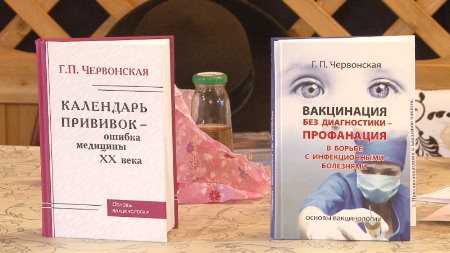
the need for immunodiagnostics before and after vaccination
and an individual approach to vaccination;
answers to the questions are given: *
“What are the arguments for and against vaccinations?”
*
“How to legally defend your rights and the rights of your child when refusing vaccination?”
*
“What are the possible consequences of vaccination without appropriate preliminary immunodiagnosis?”
*
“What rights do parents have under Russian healthcare legislation?” According to Galina Petrovna, this meeting is one of the last. We are grateful to Galina Petrovna for spending time with us, meeting with us and answering our questions, sharing her knowledge and experience in fighting for the health of Russian children! We hope that this meeting will be useful to many people, both those who came to it and those who are not indifferent to the problems raised at the meeting.

For these purposes, a website has been created dedicated to the problems of vaccination, where you can find information about the history of vaccines, links to legislation allowing the adoption of a voluntary decision on vaccination, and much more: https://privivke.net We bring to your attention a video of this meeting: Video Online *
The book, brought to the meeting in a limited number of copies, quickly sold out.
Those wishing to purchase the book by Chervonskaya G.P. “Vaccination without diagnostics is a profanation in the fight against infectious diseases” in the very near future they can purchase it (at a low price of 300 rubles) on May 25
at the address: metro station Botanical Garden, st.
Selskhozyaystvennaya, 24, Lunacharsky Palace of Culture, from 15-00 to 16-00. * Additional information: Parasitic System. Vaccination - https://genocid.net/news_section.php?sid=4 - Source -
Highlights of Galina Petrovna Chervonskaya’s book “Vaccinations: Myths and Reality”
Galina Petrovna Chervonskaya’s book raises questions about the adequate use of vaccines and the importance of educating the population in these areas. To a greater extent, the author refers to the work of a scientist (immunologist Edward Jenner), who was the first to develop such tools and introduce their use based on his own knowledge in the field of virology.
The main topics covered in the book are:

- vaccines, when administered to a child (usually an infant) with a weakened and immunocompromised state, can lead to undesirable consequences and general paralysis of the defense systems of a fragile body due to a large number of side effects;
- certain types of vaccinations contain genetically modified components that can lead to changes in the general structure of the human genome and cause a whole list of autoimmune pathologies;
- a combination of religiosity, in particular certain theses of Orthodox Christianity, and the methodology of instilled health. Basically, the contradiction between the existence of diseases and general interference in the natural process is monitored.
Also in support of her own position, Chervonskaya cites the assumption that the compositions used for children may be untested.
The use of vaccines provokes unexpected adverse reactions, both local and system-wide:
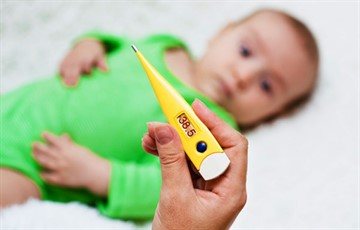
- increase in body temperature;
- rash at the injection site;
- loss of consciousness;
- gastrointestinal system disorders;
- allergies;
- headache.
A separate factor is that before vaccinations, no one checks children for the integrity of their immune system and does not draw up a genetic map. Such a technique could make it possible to reduce the number of people vaccinated with increased risks to health and life, which would accordingly influence the statistics on the development of severe side effects.
If any negative symptoms are observed after vaccination, in particular loss of consciousness or a temperature reaching 38°, you should immediately seek emergency help at the hospital.
Section II - characteristics of vaccines
II. 1. TYPES OF VACCINES________________________________________________ 43
II. 2. ABOUT THE HAZARDS OF CHEMICALS INCLUDED IN VACCINES_ 49
Memorandum______________________________________________________________61
APPENDIX to SECTION II
TABLE II. 2. Extract from the toxicity test report
experimental series of pertussis vaccines__________________________________________65
TABLE II. 3. Comparative characteristics of sensitivity
human cell cultures: primary lymphocytes and DCC
to the toxic effects of merthiolate and DPT vaccine___________________________66
APPENDIX II. 1. Justification for the inappropriateness of simultaneous two first vaccinations with live polio vaccine DPT vaccine______________ 67
APPENDIX II. 2. Extract from the minutes of the meeting of the VACCINE COMMITTEE
and SERUM dated February 9, 1983__________________________________________68
TO APPENDIX II. 2. Answers of specialists working in the field of production and control of the DTP “vaccine” to the question: for what purpose is merthiolate introduced into this “vaccine” and its other modifications?______________________________________________________________ 69
APPENDIX II. 3. About the use of merthiolate as a preservative for DPT_ 70
APPENDIX II. 4. Prohibition of the production of merthiolate in Europe________________ 71
APPENDIX II. 5__________________________________________________________ 72
LITERATURE for SECTION II
A virologist’s opinion on some vaccinations from the National Calendar
The national vaccination calendar is a legislative document that regulates the mandatory immunization plan for citizens. According to Chervonskaya, this method of vaccination is fundamentally incorrect, since some of its points are applied incorrectly.
Also, the population is not educated in the intricacies of vaccination:
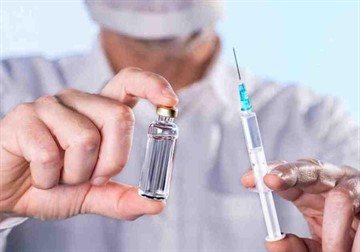
- a person may be interested in the composition of the vaccine used;
- a medical professional is required to report contraindications and potential side effects of the vaccine;
- Every citizen has the right to refuse compulsory vaccination (for children under 15 years of age, this issue is decided by parents).
Based on the vaccination schedule, immunization of all citizens - children and adults - is carried out.
The calendar is regulated in accordance with the articles of the Federal Law adopted in 1998 (“On Immunoprophylaxis of Infectious Diseases”), which also indicates the features of the interaction of medical services with the population in these matters for the purpose of protecting health:
- methodology for considering all cases of side effects from the vaccine and the development of complications (including death) with mandatory compensation payment;
- the presence in practice of a certification document that identifies all vaccinations received by a person, indicating the specific composition (in the form of a code);
- immunoprophylaxis is a list of actions that are aimed at preventing (limiting) the spread of infectious diseases.
Complications after vaccinations
In conclusion, G. Chervonskaya spoke about the complications caused by vaccination.
The composition of the DTP vaccine (associated pertussis-diphtheria tetanus) and its weakened modifications include chemicals that are very dangerous even for an adult: formalin - a carcinogen; organomercury salt – preservative – merthiolad – thiomerosal; aluminum hydroxide. There are fewer antigens in DTP than chemical substances.
Complications of DPT and its weakened modifications: local reactions up to purulent abscesses turning into compaction; excessively strong general reactions with increasing temperature. Complication with damage to the central nervous system (persistent high-pitched scream, convulsions without fever and with elevated temperature). Complications affecting various organs - kidneys, joints, heart, gastrointestinal tract. Allergic rashes, allergic swelling, asthmatic syndrome Anaphylactic shock. Sudden death.
Complications of BCG (vaccination against tuberculosis): osteitis - bone damage, osteomyelitis - bone damage with bone marrow, lymphadenitis - inflammation of the lymph nodes, dysbiosis, tuberculosis.
The next seminar by Galina Chervonskaya (at which, we remind you, the participants will be given the Law “On Immunoprophylaxis of Infectious Diseases” and the text of the waiver will be dictated) on the topic “Contraindications to the administration of vaccines. Immunodiagnostics” will take place at the Marfo-Mariinsky Convent on June 15 at 14:00.
Leonid VINOGRADOV
Chervonskaya's comments regarding certain types of vaccines
The main factor that Chervonskaya wants to explain is the right of every citizen to avoid medical procedures that are dangerous to him.
BCG
This drug is administered in maternity hospitals to almost all newborns, without preliminary tests to check the immune state.
Side effects from BCG include:

- local negative reactions : cold abscess (formation of a minor abscess in the injection area), development of necrotic skin lesions, ulcer formation, appearance of keloid scars with severe itching, enlargement of regional lymph nodes with possible complications;
- disseminated BCG infection : skin tuberculosis, osteomyelitis, osteitis, keratoconjunctivitis;
- post BCG syndrome : anaphylactic shock, erythema nodosum, exanthema, etc.
Generalized BCG infection, caused by system-wide tuberculosis, is highly likely to lead to death.
Measles, rubella, mumps
The drug CPC, which is also administered in childhood to immunize the body against measles, mumps and rubella.
Side effects include:
- toxic lesions;
- increased body temperature;
- nosebleeds;
- development of abdominal syndrome.
The following types of allergic reactions often occur:
- hemorrhagic rashes with the presence of bleeding;
- asthmatic syndrome;
- Quincke's edema;
- hives and other skin rashes;
- thrombocytopenic purpura.
Neurological complications include:
- post-vaccination encephalitis;
- cerebral disorders;
- convulsive syndrome, including febrile convulsions (often with loss of consciousness).
Most complications primarily lead to disability.
Polio
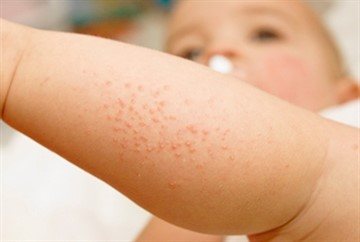
When using live polio vaccines, the following side effects occur:
- dermatitis;
- hives;
- intestinal disorders;
- paralysis and paresis;
- Quincke's edema.
There is also a possibility of developing VAPP (vaccine-associated paralytic poliomyelitis) after using the vaccine.
Criticism from immunologists and other specialists
Regarding the book, authored by Galina Petrovna Chervonskaya, many specialists in immunology and vaccinology responded negatively, since this work relates to a medical focus, and the author is not provided with such education.
In contrast to the described factors, they give the following arguments:

- side effects in humans occur only in cases of violation of the method of transportation and storage of the drug or the presence of hidden contraindications, in particular individual intolerance to the components;
- elevated temperature from vaccination is a particular variant of the norm and an indicator of activation of the immune system. This condition does not require the use of any medications or calling an ambulance (depending on the indicators);
- Local manifestations in the injection area disappear on their own with proper care. This implies the absence of irritating factors - water, sunlight, friction (on clothing or scratching);
- systemic manifestations require emergency care, which is ensured by a mandatory 30-minute stay of the vaccinated person on the territory of the medical institution - the treatment used depends on the symptoms and its origin.
There is a danger of severe complications when using vaccines for immunization. However, with modern methods of manufacturing these drugs, as well as the development of medicine, this probability is reduced to a minimum.
The preparations used for immunization contain low concentrations of the pathogen, more often dead variants, so there is no need to worry about post-vaccination damage to the body.
Misconceptions, disputes and myths
There are many misconceptions, disputes and myths associated with vaccination – both mandatory and additional.
EMS Clinic pediatrician Danil Nikolaevich Khlebnikov refutes the most popular of them:
Myth No. 1: After vaccination, a child’s immunity decreases.
Parents sometimes say: “We got vaccinated and started getting sick all the time.” It's a delusion. Numerous studies have not revealed a negative effect of modern vaccines on the immune system; on the contrary, in fact, vaccines strengthen the immune system: the child is protected against dangerous diseases. We have cells that are responsible for the immune response. When we administer a vaccine, a protein is produced, immunological memory appears, the cells themselves are not destroyed, and other proteins - that is, immunological memory in relation to other infections - will also work perfectly
Myth No. 2: Vaccinations cause cerebral palsy and autism
It is important to understand that there are under-examined children. Until three or four months, it is sometimes difficult to say that a child has cerebral palsy, because the reflexes are alive, the child eats, assimilates everything, develops normally, and it is sometimes difficult to say anything specific. They got vaccinated, and the child became disabled - this, of course, cannot happen. And there is definitely no connection between autism and vaccination; there have also been many studies on this matter.
Scientific research suggests that administering multiple vaccines at the same time does not have a negative effect on a child's immune system.
Myth #3: Vaccinations cause disease.
For example, if you were vaccinated against rotavirus infection and fell ill, this also cannot happen; you cannot get sick from a vaccine. Some vaccines that were used in the past could, although very rarely, cause the disease - for example, the live polio vaccine. Modern vaccines are killed or very weakened, and they cannot cause disease.
To vaccinate a child or not: all the pros and cons of vaccination
From a legislative point of view, the book authored by Galina Chervonskaya about vaccinations does not contradict existing norms - every person has the right to refuse medical services, including vaccination.
But, when considering in detail this method of preventing infectious pathologies, all risk factors should be assessed.
Among the positive aspects, the following are emphasized:
- the formation of protective reactions (to the causative agent of the disease), which are fixed in the body;
- stimulating the development of the immune system and increasing overall resistance to infectious disorders;
- planned monitoring of the child’s condition and timely adoption of measures in the event of the progression of severe disorders.
However, before agreeing to such a procedure, it is necessary to be attentive to the health status of both your own and the child. To do this, you should attend preventive examinations and receive timely treatment. Experts also recommend listening to your doctor and studying statistical information provided to explain the risks and dangers of the procedure.
Myths about vaccinations
Vaccine myths usually arise from a lack of clear information about how vaccines are made and work. Various myths have come and gone since the invention of vaccines. For example, if you apply a drug obtained from vesicles from a cow’s udder to the skin of your hand, then a cow will grow on your hand (this was thought at the beginning of immunization against smallpox, which was invented by Edward Jenner at the end of the 18th century). And despite the fact that mass vaccination against many diseases has practically led to the maintenance of a situation of marked reduction or disappearance of these infections, some myths about vaccinations continue to circulate.
We present you the most common myths about vaccination and explain what they really are.
Myth No. 1. I don’t see these infections, there is no need to get vaccinated
“Parents are often intimidated by the possibility of their child encountering infections. Maybe there really are a lot of infections around - but for some reason I don’t see them, who has seen patients with diphtheria or polio? Good hygiene and sanitation protect us from disease.”
This is a typical human reaction to an attempt to protect him from something that he has not yet encountered. “I don’t see, I don’t know, which means it doesn’t exist” (until the thunder strikes...). There is hardly any need to convince someone who has just been diagnosed with hepatitis B to be vaccinated against hepatitis B. But when a person is faced with the fact of infection, it is already too late and useless to engage in prevention (vaccinations). Therefore, the child runs the risk of getting sick from all infections until the mother is finally convinced that there is whooping cough, hepatitis B, hepatitis A, and measles with chickenpox around them.
Although vaccine-preventable diseases have become rare due to mass vaccination, the infectious agents that cause them continue to circulate. These germs can even cross borders and infect those who are left unprotected.
Therefore, there are two main reasons to get vaccinated - to protect ourselves and to protect the people around us. Successful vaccination programs, like successful communities, depend on the cooperation of each individual to ensure the benefit of all.
If a person, due to misconceptions, decides not to get vaccinated, and the number of such refusals increases, then the number of people who can become infected and get sick, and infect others, also increases. To stop the spread of infections, each of us needs to get the vaccinations that are recommended for him.
Good hygienic living conditions, hand washing and clean water certainly help protect people from infectious diseases, but many infections spread no matter how clean we wash ourselves. If people stop getting vaccinated, diseases that have become rare quickly reappear.
Myth No. 2. Vaccinations overload the natural immune system.
“Most people have natural immunity to many diseases, and if such a person is given a vaccine, the immune system can be overloaded.”
Unfortunately, natural specific (that is, directed against specific viruses and bacteria) immunity does not exist. Yes, there are innate nonspecific mechanisms of protection against infections, but alas, there is no “natural” innate immunity against hepatitis B, diphtheria, tetanus or influenza, otherwise why would you need to protect your life with vaccinations? However, some antibodies are transferred to the newborn from the mother, but not for long, and their level is not always sufficient to protect the child. There is no point in putting your baby at risk if you can protect him through vaccination.
Myth No. 3. Wait up to a year to get vaccinated.
“Wait until your child is at least a year old and stronger before starting vaccinations.”
Why not wait until two, three, five years then? Why is the age of one year so remarkable? You can delay as much as you like, but infections do not wait and can affect an unprotected baby: it is the age from the first months of life that is most dangerous for the development of diseases caused by whooping cough[1], Haemophilus influenzae[2] and pneumococcal infections[3]. These are pneumonia, otitis media, meningitis ( inflammation of the meninges), sepsis (infection in the blood). Many vaccines are specifically designed to protect young children. Therefore, it is better to complete the standard primary course of vaccination on time so that by 6 months the child has sufficient immunity to protect against the listed diseases. It is at this age that the child loses the main maternal antibodies and begins to actively explore the world by crawling and communicating with relatives.
Myth #4: It is better to administer vaccines separately rather than together.
“Some people believe that it would be more correct to vaccinate against diseases separately, rather than together - then it will be easier for the body to cope with the introduced bacteria.”
Live bacteria are introduced only in the case of the BCG vaccine (of course, we are not talking about exotic vaccines like tularemia). Therefore, there is no talk of any summation of bacteria.
It has been scientifically proven that the simultaneous administration of several vaccines does not “overload” the child’s immunity. Every day, children are exposed to several hundred foreign substances, and the immune system reacts differently to each of them.
Simply eating food introduces new antigens into the body, and numerous bacteria already live on the skin, mouth, nose and intestines. A child is exposed to many more antigens from a cold or sore throat than from a vaccine.
The key benefits of administering multiple vaccines or multicomponent vaccines at one time are fewer shots and fewer clinic visits.
When vaccines are administered separately, the vaccination process is delayed for many months; the child is constantly taken for injections, instead of quickly completing the course of vaccination with the simultaneous administration of suitable vaccines.
In addition, in combined multicomponent childhood vaccines, the number of accompanying substances is several times less than when each vaccine is administered separately, which reduces the risk of adverse reactions.
You should not expose your child’s body to additional injection stress by choosing separate vaccinations when this is not necessary.
Myth No. 5. Many people don’t get vaccinated and don’t get sick.
“It’s probably worth mentioning flu vaccinations, which many people do very willingly every year and experience the flu in a milder form, while others never do it and never get the flu. Although, of course, there are opposite examples: some who have been vaccinated do not get sick either, but those who are not vaccinated still get sick.”
It is a mistake to assume that 10 or 30 people we know closely are a representative sample that measures the health of a nation. In other words, if our friends are not alcoholics, this does not mean that there is no problem of alcoholism in Russia.
You can compare comparable things, so for correctness you need groups that are identical in age, gender, presence of concomitant pathology, degree of risk of infection and other factors. Then the difference between vaccinated and unvaccinated will be more than obvious - a 2-fold and even 4-fold reduction in incidence among vaccinated people, which has been proven by no less than a thousand studies of various sizes around the world.
Another example: “I got a flu shot and got sick.”
What did you get sick with? Flu? Is this proven by laboratory tests? Or fell ill with a common acute respiratory infection, from which the flu vaccine is not intended to protect?
Vaccines against influenza and many other diseases are inactivated (killed) and cannot cause the disease itself.
Show sources
Sources
- Pertussis vaccines: WHO position paper - August 2015. Weekly Epidemiology Bulletin (WER), 2015;35(90):433–460
- WHO position paper on Haemophilus influenzae type b (Hib) vaccination – July 2013. Weekly Epidemiology Bulletin (WER),2013;39(88):413–428
- Pneumococcal vaccines: WHO position paper, 2012. Weekly Epidemiology Bulletin (WER), 2015;14(87):129–144
Video on the topic
Lecture by Galina Petrovna Chervonskaya “Vaccinations - myths and reality”:
The main goal of Chervonskaya’s activities and published works is to explain to the population the dangers of such an event as vaccination and to draw attention to the need to study all the intricacies of such medical procedures.
Refusal to vaccinate in the presence of contraindications or for individual reasons is an inalienable human right. Therefore, before agreeing to carry out such a manipulation, it is necessary to consider all the risks of post-vaccination reactions and the importance of the procedure itself.


